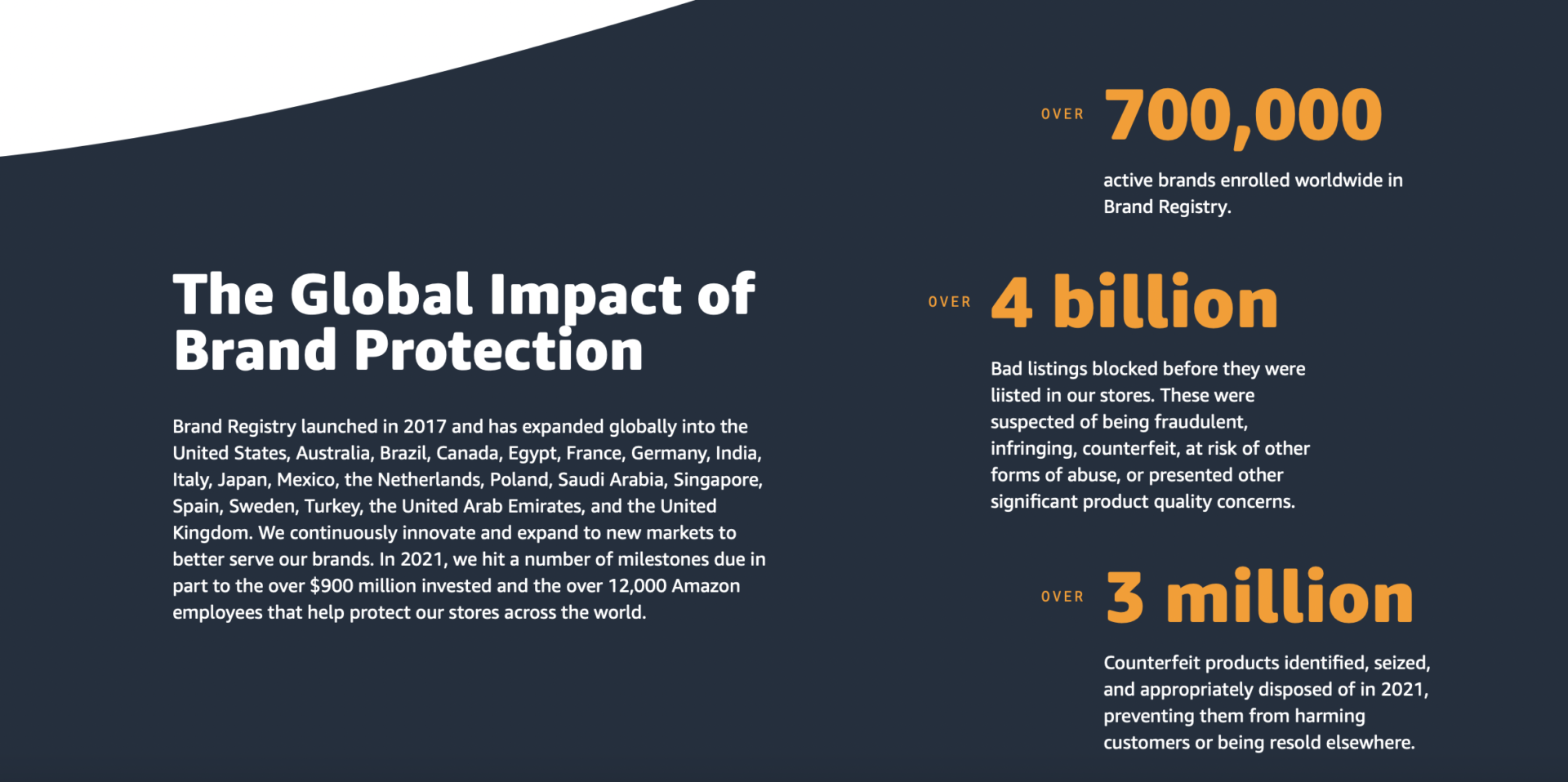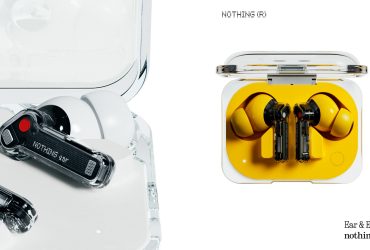Amazon today released its second Brand Protection Report, which highlights Amazon’s commitment to the authenticity of goods sold in its store and to fighting bad actors so that customers can shop with confidence.
Amazon and its millions of selling partners—the vast majority of which are small and medium-sized businesses—serve hundreds of millions of customers worldwide. Customers expect that when they purchase an item in Amazon’s store, sold either by Amazon or by one of its third-party selling partners, they will receive an authentic product.

In 2021, Amazon invested more than $900 million and had more than 12,000 people—including machine learning scientists, software developers, and expert investigators—who were dedicated to protecting customers, brands, selling partners, and their store from counterfeit, fraud, and other forms of abuse.
“Our team continues to innovate to stay ahead of bad actors while working in partnership with rights owners, law enforcement, and other experts to ensure customers can continue to shop with confidence,” said Dharmesh Mehta, Amazon’s vice president of Selling Partner Services. “While we are proud of the progress we have made, we will not stop until we drive counterfeits to zero in our store.”
The second Amazon Brand Protection Report details a wide range of progress against three key areas: powerful and highly effective proactive efforts to protect Amazon’s store; industry-leading tools enabling rights owners to partner with Amazon to better protect their brands and holding bad actors accountable. Here are some highlights from the report:

Deterring and Stopping Bad Actors: Amazon stopped more than 2.5 million attempts to create fraudulent selling accounts, preventing these bad actors from publishing a single product for sale. This is down from more than 6 million attempts the prior year, thanks to robust seller and product vetting, along with efforts to hold bad actors accountable that are deterring them from attempting to sell on Amazon.
Increasing Adoption of Brand Protection Tools: Brand Registry, which unlocks a suite of tools to build and protect a brand on Amazon, grew to include more than 700,000 active brands, an increase of 40% from the prior year. At the same time, the average number of valid notices of infringement submitted to Amazon by a brand in Brand Registry, decreased by 25% from the prior year, as continued growth in the adoption and efficacy of automated brand protection tools continue to reduce the number of issues that brands are able to find and report.
Holding Counterfeiters Accountable: Amazon’s Counterfeit Crimes Unit (CCU) continued to focus on ensuring that counterfeiters are held accountable by stopping them from abusing Amazon’s stores and those of other retailers across the industry. In 2021, Amazon’s CCU filed civil litigation against more than 170 counterfeiters in U.S. courts and sued or referred more than 600 criminals for investigation in the U.S., UK, EU, and China, an increase of more than 300% over 2020.

Identifying and Seizing Counterfeits: Amazon identified, seized, and appropriately disposed of more than 3 million counterfeit products, preventing them from harming customers or being resold elsewhere in the retail supply chain. This includes counterfeits that were sent to Amazon’s fulfillment centers and situations where Amazon worked with brands and law enforcement to find counterfeiters’ warehouses and facilities with the goal of getting them shut down.
Forging Public-Private Partnerships: Amazon published a blueprint for public and private sector partnership to stop counterfeiters, building on learning and progress in protecting Amazon’s store. This included the importance of information exchanges in the private sector to stop counterfeiters across retailers, partnering with customs to protect the borders, and the need for increasing resources for law enforcement to prosecute counterfeiters. That blueprint is driving productive dialogue and helping shape data sharing pilots and potential legislation.
To read Amazon’s full report click here









